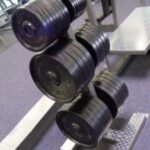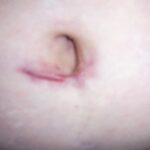HYDROCELE
A hydrocele is a collection of watery fluid around the testicle that causes a painless, enlarged scrotum. It can be frightening, but it is a common problem in newborn males and usually goes away within the first year. The fluid build-up can be on one or both sides of the scrotum. 80% to 90% of newborn boys have a hydrocele and the incidence of hydrocele is rising due to the increasing survival rate of premature babies and with the increasing use of the peritoneal cavity for shunts, dialysis and renal transplants. Certain conditions are associated with increased incidence of hydroceles. These include breech presentation, gestational progestin use and low birth weight.
About the eighth month of pregnancy, the testicle descends down a tube from the abdomen into the scrotum. When this tube fails to close, peritoneal fluid drains down from the abdomen from the open tube. The fluid gets trapped in the scrotum and it causes the scrotum to enlarge. Most hydroceles dissolve by 18 months of age. The following are some of the most common symptoms of a hydrocele:
A mass that is usually smooth and non tender
A communicating hydrocele can fluctuate in size, getting smaller at night while the infant is lying flat and increasing in size when the infant is more active.
The hydrocele usually goes away a few months after birth, but if it is still present after 12-18 months, or if it is unusually large, surgery is recommended. Hydroceles aren’t usually painful or dangerous and require no treatment, but if you notice any swelling of the scrotum, see a doctor to rule out other more dangerous conditions such as testicular cancer. Hydroceles present as a soft, non-tender fullness within the scrotum. The testis usually is able to be felt along the back of the fluid collection. A preliminary test the physician may do is to shine a beam of light at the scrotum. If the scrotum illuminates, revealing a glow without internal shadows, it is a hydrocele. If internal shadows are present, a different diagnosis or some other underlying reason may be the cause of the swelling. A scrotal ultrasound is the next step in diagnosing a hydrocele.
INGUINAL HERNIA
A pediatric inguinal hernia is a protrusion of an organ, usually the intestine, into the groin. It appears as a lump. Both a hernia and a hydrocele occurs during fetal development when the opening between the abdomen and the scrotum doesn’t close properly prior to birth.
An inguinal hernia occurs when the intestines pass through the opening and into the scrotum causing it to enlarge. Both of the two conditions are generally not painful for the baby. Infrequently, the intestines (or occasionally, the ovary in a girl) becomes trapped in the hernia sac and can result in discomfort. This condition requires urgent surgical repair.
An inguinal hernia is five times more common in boys than in girls, and it affects approximately 3-5% of all full term infants and 5%-10% of male infants. Low birth weight and prematurely increase the risk dramatically. Inguinal hernias may not be noticeable for weeks, months or even years after birth. Straining and crying do not cause hernias, but the increased pressure in the abdomen when crying can make a hernia more noticeable.
An inguinal hernia looks like a bulge or swelling in the groin or scrotum, and the swelling can get smaller or go away entirely when the baby relaxes. If the doctor gently pushes on the swelling when the baby is calm and lying down, it will usually get smaller or go back up into the abdomen. (This is a reducible hernia)
If the hernia does not do this, it is said that the hernia is not reducible. The loop of intestine may be caught or trapped. This is an emergency that requires immediate medical attention. Here are the most common symptoms that indicate his has happened. The symptoms may include:
A full, round abdomen
Vomiting
Pain or fussiness
Redness or discoloration
Fever
All inguinal hernias must be repaired with surgery and the surgeon , especially with infants, will want to operate soon after a diagnosis is made to prevent any complications with the hernia.
For healthy infants and children, surgery to repair either an inguinal hernia or a hydrocele is performed as a day surgery under a general anesthesia. There is a minimum of discomfort due to the small incisions necessary to correct these conditions.





